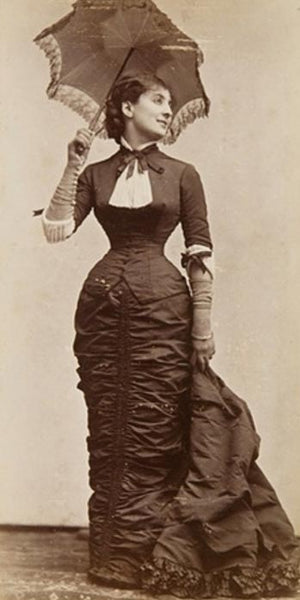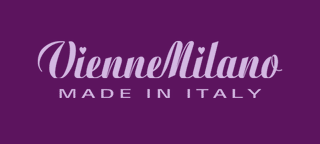How Has the Idea of Beauty Changed Over Time?
What do you consider beautiful? What you might think is the definition of beauty is something entirely different from another person. While we might have beauty standards that involve the latest trends such as the side or middle part, time and place deeply influence the idea of beauty.
The idea of beauty has changed and will continue to change throughout history. What was once a beauty standard is no longer the norm, and things are always changing. Let's take a look at how beauty has changed throughout time.
Ancient Beauty
In ancient Egypt, you were considered beautiful if you were slim with a symmetrical body. Typically, younger females and males with muscles were most beautiful. Similarly, Greeks valued a symmetrical face, but men's bodies were valued over women's.

In ancient China, beauty was all about size. The smaller you were, the more beautiful you'd be considered, which is why foot binding was brutal, and some women who did it didn't want to. Some women went to such great lengths to get tiny feet and waists.
Renaissance and Victorian Beauty
Women during the Renaissance era normally had longer hair, wider hips, and on the heavier side. A more full figure was often considered an indicator for signs of fertility. Fertility was a defining trait of beauty for men during this time, as these men wanted health and child-bearing hips.
After the middle ages, the beauty standards changed for women. The standard became a curvier, fuller figure with pale skin and light hair. These standards are similar to Victorian England as well. Women wanted to be full-figured but with smaller waists, which they achieved through the use of corsets. The ideal beauty was a pale face, rosy cheeks and dark eyes.
The Victorian era was also when makeup was a controversy, but was also when it became popular. Questions were asked about these women. Why was she trying to hide? Is she trusted? Was make-up healthy? However, beauty products had toxic ingredients like lead, nightshade, and mercury.

20th Century Beauty
The turn of the new century was also the turn of new beauty standards. In the '20s, women had shorter hair and less emphasis on the waist. In regard to fashion, women dressed up. They would wear big fur coats, flapper hats, dresses, thigh high stockings, and more. It was a statement that women dress to impress. During the night, it was pure glamour with high heels, pearls, beads, and silk. A great reference would be The Great Gatsby and the fashion depicted in the iconic novel and movie. You would never see a woman leave without her hair, makeup, stockings, and bold lipstick on. As this trend started in the 20th century, it is something that never died and is a great way for women to fully dress up on a night out.

Only ten years later, the beauty standards changed again, with Hollywood bringing back the hourglass figure. This standard continued in the '40s and '50s with popular stars such as Marilyn Monroe.

As far as makeup was concerned, most women went with a natural look that only highlighted lips and eyes.
And, finally, the '60s. How could we not talk about pants that made you look thin with long legs? Both the fashion and cultural scene changed in the '60s after the recovery of the economy after the war. Now, women opted for long jeans and eyelashes.
The '80s and '90s Beauty
When you think about the '80s, you likely think about workout videos. This was the first time that working out was truly in style. Women began trying to obtain more athletic figures to be thin and fit. The ‘80s was a big time for fashion, with more racial and ethnic inclusion in the media than there was in past years. This was also the time when women became more career-oriented, which meant dressing the part. The trends you’re most likely to remember from the ‘80s are big square blazers, shoulder pads, big hair, and bold colors.
Just ten years later, in the '90s, beauty standards were different. Women chose to express themselves more. Some wanted to be skinny and pale like Kate Moss, and in the fashion world, boxy, denim, and plaid were all the rage. For makeup, women toned down the bright colors of the '80s and became more neutral. However, there was still tons of body glitter.
21st Century Beauty
The 21st century may have just begun 20 years ago, but the concept of beauty continues to change. Most women aim for a slender look with larger breasts and flat stomachs. While this remains to be the norm that many women strive to be, this century has allowed us to realize that not everyone needs to fit those standards.
The last few years have been an awakening of sorts. Thanks to social media, we now see beauty in many different lights. Groups of individuals who didn't have a voice before now do, thanks to social media, and are fighting against traditional beauty standards for a more truthful representation of all body types and beauty types that exist in the world.
Instead of aiming for the "ideal body," women are putting more effort into being happy and healthy. They are talking more openly about their struggles and how beauty standards have impacted their lives. While there is still a long way to go in this discussion, we do expect that it will continue to move forward as we all become more body-positive.
What Has Been the Most Constant Beauty Standard?
The answer to this question might shock you, especially if you grew up in the '80s, '90s, or early 2000s. While many of us were growing up, we were led to believe that being thin was the “ideal,” which is simply not true. Curvy has been considered the ideal throughout most of history.
All over the world, beauty is typically connected to wealth. Those who performed physical labor, and ate only what they needed to survive and kept working, were thin and muscular because they had to so they could perform their jobs and put food on the table for their families. Being curvy for these individuals was rare.
In these societies, the heavier a woman was, the more beautiful and wealthy she was likely considered because it meant she wasn't starving on the street or working hard labor. A full figure also meant fertility, but most of all, it signaled her social class.
Compared to today, the '50s standard body was heavier than it is today. The thin silhouette we've all been believing is the ideal body type is only a recent beauty standard.
Along with curvy body types, one thing that we see across all of history when it comes to beauty is skincare. Whether it be staying away from the sun for a pale complexion or bathing in mud to detoxify, all women have wanted beautiful skin since the dawn of time. Luckily, we now have scientifically proven anti-aging cream and lots more understanding of how to keep our skin looking its best (no lead or mercury required!).
Final Thoughts
Beauty standards don't last and are always changing. Something that you might feel is beautiful now might not be in ten years. While we live in a world where we’re shown advertisements and media with photoshopped bodies, it’s important to remember that many brands are making an effort to show more diverse bodies and the different types of beauty that exist in the world. After all, beauty is in the eye of the beholder. One person’s vision of beauty is different from another’s.
About the author
Samantha Rupp holds a Bachelor of Science in Business Administration. She is the managing editor for 365 Business Tips as well as runs a personal blog, Mixed Bits Media. She lives in San Diego, California and enjoys spending time on the beach, reading up on current industry trends, and traveling.







Comments
Sukanya Patra said:
Thanks for the blog. I am surprised at the unconventional beauties in media and I wondered if beauty standards have changed that much. I grew up in the 80’sand 90’s. However on the other side the amount of plastic surgery
done by the influencers is horrible.